I think of my spiritual ancestors as Joan Crawford, Barbara Stanwyck, Gloria Grahame, Lauren Bacall, Joan Bennett and Bette Davis. Their hard-won independence, their juicy scandals and their irrepressible willful streaks on and off screen laid the groundwork for all of us femmes fatales to call the shots, own our dramas and embrace the concept of high maintenance. Put simply: to be a bitch.
That said, there are many other vixens, vamps and troublemakers who, though far less famous, are equally inspirational. One of these role models by extension, as it were, was Kate Mantilini, the namesake of a terrific Beverly Hills restaurant that is closing its doors on June 14, after 27 years in business.
Owner Marilyn Lewis says a recent rent increase prompted her decision.
Kate Mantilini was a feisty woman of the 1940s and the mistress of Marilyn Lewis’ uncle. (Marilyn and her late husband Harry Lewis were also the founders of the enormously popular Hamburger Hamlet chain. Harry died last June; he was 93.)
Says Marilyn Lewis: “My mother wouldn’t let me speak to her, nobody would allow us to mention her name, but she was a very strong woman and I wanted to name my restaurant after her.”
Of Irish and Italian descent, the unconventional Kate reportedly liked to do things her way and one of the things she really liked to do was to run businesses. The restaurant’s boxing mural is a nod to the fact that Kate worked in the male-dominated field of fight promotion.
The first time I went to the famous spot was for a late-night supper after seeing a Murnau double-bill at Lacma’s Bing Theater. I was visiting from Chicago and my friend Mickey Cottrell, a veteran film publicist and top-notch performer, suggested to the little group that had gathered that we nosh there. “Let’s head to Kate’s,” he said, as if Kate were a friend who had missed the movie but invited us to her place afterward.
Kate’s hasn’t changed much since it opened in 1987. Outside, by night, a blazing red neon sign pierces the inky blackness of Wilshire Boulevard. The building sits on the northwest corner of Wilshire and Doheny. Kate’s is walking distance from the Academy; the Weinstein Company is across the street.
Inside, the long, narrow room pulses with talk and laughter; fleet servers fly by, their crisp white aprons flash against the muted gray and cream walls. Glasses, plates and silverware clink and chime.
“I’m definitely moving here,” I thought to myself as we walked in that night, now long-ago. “This is so much cooler than Chicago.”
Mickey had a regular booth he liked; he suggested I order the sand dabs. Delightful. Our party was delightful too. Boisterous, funny, quick to argue fine points about films.
The kind and generous writer/producer/filmmaker Myron Meisel picked up the tab. Critic Michael Wilmington pointed out that the character actor Wallace Shawn was sitting in another booth.
Kate’s has always been popular with industry folk; celebs like Billy Wilder and Mel Brooks were regulars. Writers too, such as Susan Orlean and Tere Tereba, stopped by. Michael Mann, a master of filming Los Angeles by night, chose Kate’s for the scene in “Heat” (1995) when Al Pacino and Robert De Niro talk about their lives as cop and criminal.
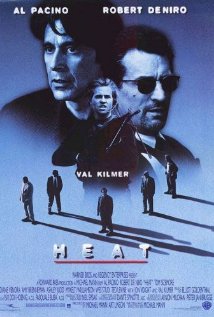 Harry Lewis was in the entertainment business before he and his wife became restaurateurs. As a contract player with Warner Bros. in the ’40s; Harry had a part in the film-noir classics “Key Largo” starring Humphrey Bogart and Edward G. Robinson as well as in “Gun Crazy” with John Dall and Peggy Cummins.
Harry Lewis was in the entertainment business before he and his wife became restaurateurs. As a contract player with Warner Bros. in the ’40s; Harry had a part in the film-noir classics “Key Largo” starring Humphrey Bogart and Edward G. Robinson as well as in “Gun Crazy” with John Dall and Peggy Cummins.
My friends and I may have been the last ones out that night and I’ve been back many times since. (I moved to Los Angeles in November of 2007.) I celebrated birthdays there, met girlfriends for drinks, marked triumphs big and small, stopped by for a slice of lemon ice-box pie and a cup of coffee after seeing a film at the Wilshire screening room.
It’s tough to think that after next Saturday I won’t be able to go to Kate’s anymore. I was a fan of the food (in particular the Cannes Film Festival salad and the split-pea soup) and the building and the vibe. By vibe I mean a sort of magic that’s absent from lots of trendy new restaurants.
You felt when you went to Kate’s that you were truly “in” – you might rub shoulders with Hollywood power brokers – but more importantly you were in for really good food and a really good time. Every time you went.
The Beverly Hills Cultural Heritage Commission is considering the property for landmark status to protect the building in the event that new owners decide to remodel. The land parcel (9101, 9107 and 9111 Wilshire Blvd.) features the work of architects Pereira and Luckman, Maxwell Starkman and Thom Mayne.
I hope that happens. But in the meantime, I’m going to raise a glass to Kate – who liked a good fight – and to the strong women she inspired – who doubtless have healthy appetites and never skip dessert.
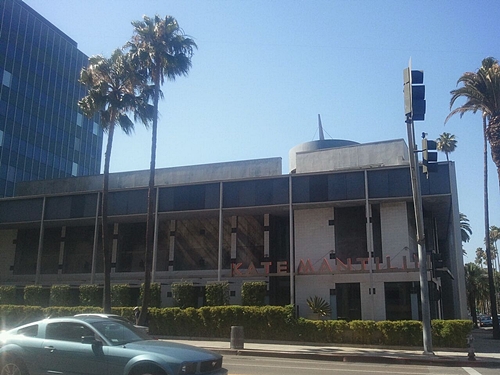
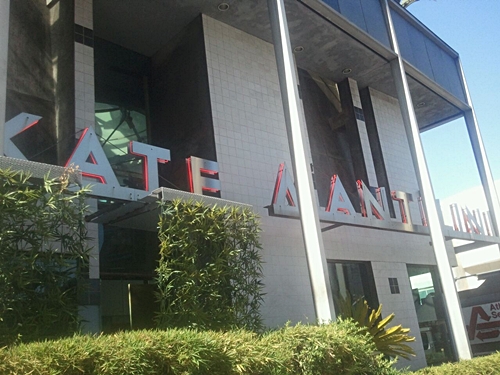
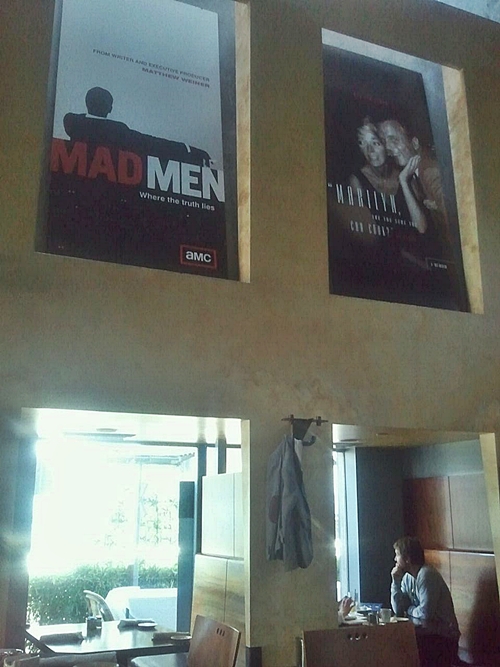
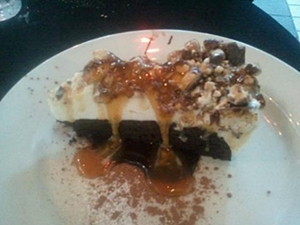





![bogie and bacall[1]](http://www.filmnoirblonde.com/wp-content/uploads/2012/08/bogie-and-bacall1.jpg)
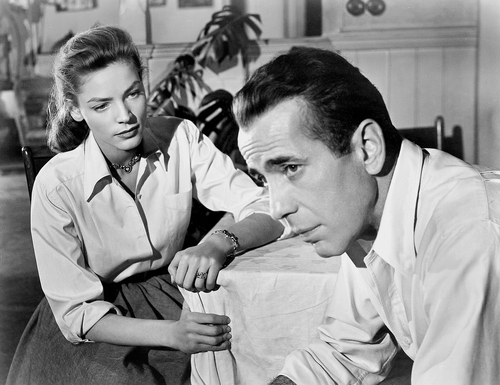
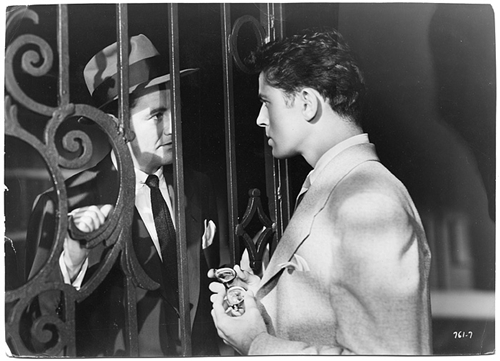
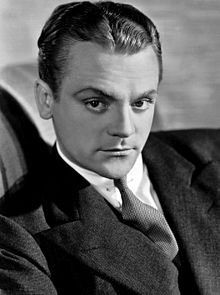
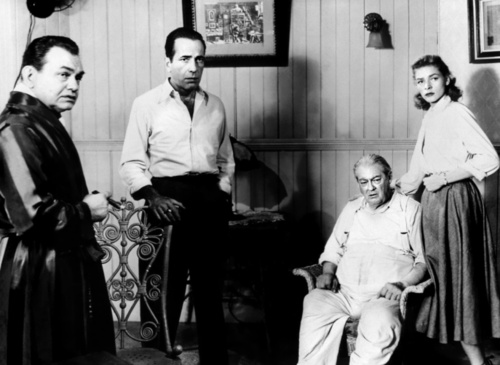
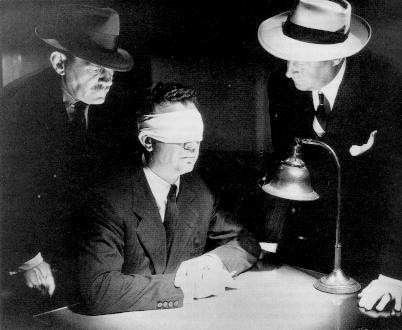
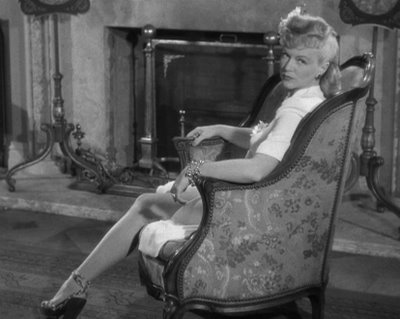
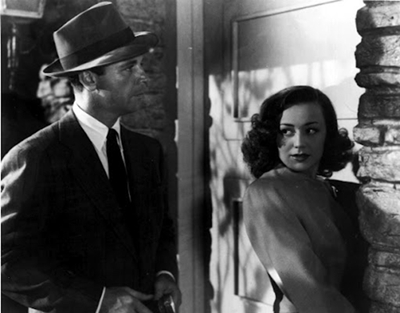
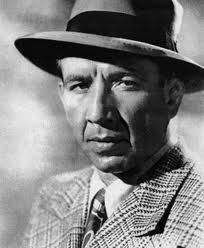
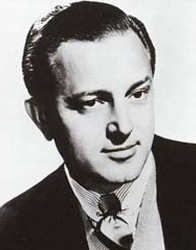
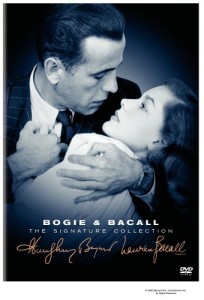





From FNB readers